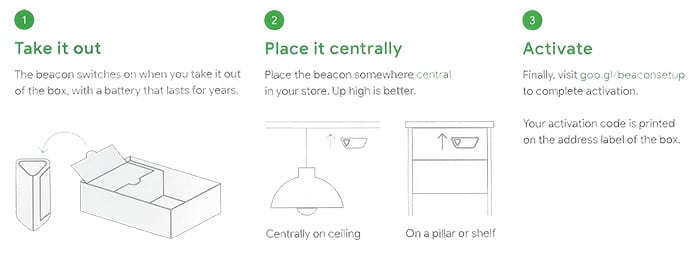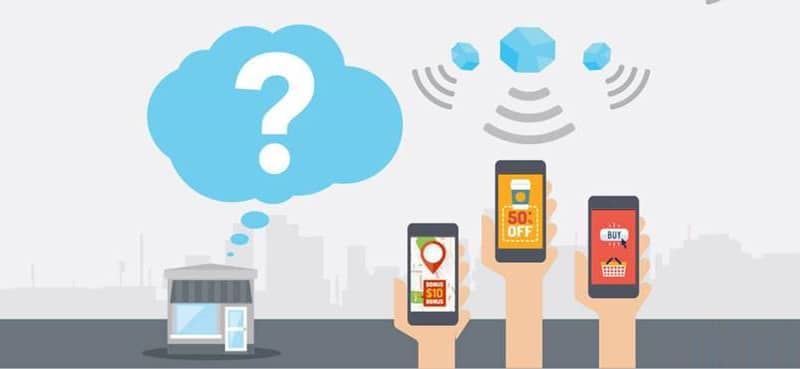What is Google’s Project Beacon and why did I receive one?
Project Beacons are small Bluetooth-enabled devices that businesses place near their entrance or in a central point in their establishment. These beacons provide accurate location information about objects or points of interest, giving Google insights related to user visits to stores and enabling proximity marketing.
Google has started sending beacons to businesses that advertise with Google Adwords and have also enabled location extensions in that platform, meaning they must have their Adwords and Google My Business listings connected to qualify. Google has closed the request form for businesses to request beacons, but if you are eligible, just be patient, and one may show up when you least expect it!
How to set up your Google beacon for better proximity marketing
If your business has received a beacon, here’s how to get started. Simply:

Setup for Project Beacon is incredibly easy. You take it out of the box, place it in a central location, and then access the form via the URL in the brochure to provide your access code (it’s printed on the mailing package). This process takes about five minutes, maybe a few more if you need a ladder to place it above your entrance. Once it’s out of the box, it is turned on and ready to go. Google expects the batteries to last a few years, so there shouldn’t be any maintenance required for the foreseeable future.
How will Project Beacon affect your Google Business listings
As soon as you activate your beacon, customers in your store are likely to receive pop-up notifications on their mobile devices right away. They’ll be asked for business information and offered an opportunity to leave a Google review. This is only one of the ways Project Beacon can impact your business.
According to Google, beacons will help your business show up on customers’ maps and saved places, so they’ll always see your business above others who don’t have beacons. The platform will encourage users to upload photos and experiences related to their store visit, and information about the most popular times to shop and visit durations will become far more accurate. Google promises more advanced features in the future. While they have not specifically said so, we expect the Beacon Project to support Google Ads with the ability to more accurately track in-store visit conversions.
Google Project Beacon vs. Eddystone Beacon
You might have also heard about Eddystone, an open beacon format from Google. It utilizes the same technology as the Project Beacon but is much more powerful. While the beacons Google is sending out to local businesses will help improve your Google My Business listings, there are limitations in their customization. Meanwhile, Google’s Eddystone Beacon allows developers to build on top of the beacon platform, making the possibilities for their use virtually endless.
With Google’s Beacon on the Eddystone platform, you can send notifications and messages to users in precise locations. A retail store could send an instant coupon for electronics to customers browsing that department, prompt users to download their app when they enter the store, or provide better location mapping services so customers can find you.
How proximity marketing can help grow your business
Utilizing beacons is a cost-effective way to get started with proximity marketing for your business. Proximity marketing refers to any marketing effort that utilizes digital distribution to individuals in a specific location. Localized marketing efforts help you engage with customers and drive conversions, hitting your audience when they’re most likely to answer your call-to-action – when they’re in your store or in close proximity.
To learn more about how Group3 can help with your Google local listings, digital ads, or getting started with Google’s Project Beacon, contact our Raleigh marketing agency.



